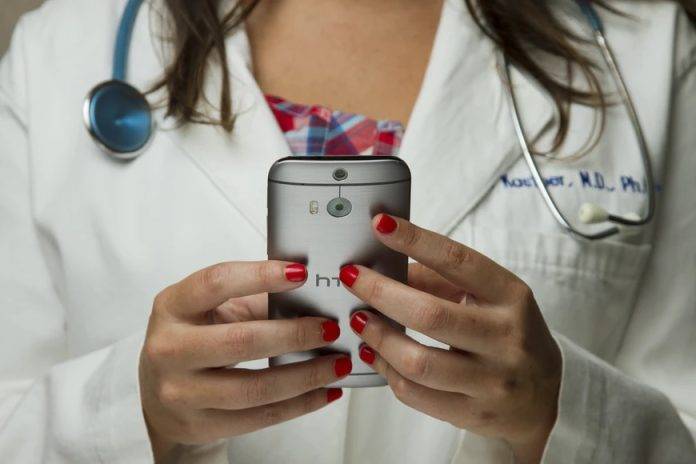While the vast majority of Americans are satisfied with their primary care physician, high costs combined with low control over medical services keep many people from accessing critical care.
Patients navigating America’s notoriously piecemeal and expensive healthcare system are becoming more open to accessing care through secure mobile apps. The rising telehealth revolution is giving Americans more options, lowering costs, and increasing efficiency.
Logically, apps cannot replace all types of medical care. Many diagnostic tests and routine procedures still require in-person appointments. However, technology is quickly adapting to shifting more and more of the health care system to a virtual setting.
It is already possible for people to order up an at-home blood test and self-diagnose for a range of conditions. Like the test kit industry, telehealth appeals to the common desire to have more control over healthcare.
Concerns about COVID-19 infections also prevented millions of Americans from getting needed medical care in 2020. The American Medical Association positions telehealth as an effective communication channel to loop these missing patients back into the care continuum.
Telehealth Improves Access
Missed health appointments correlate with a spate of poor health outcomes, most significantly for patients with mental health issues. A 2019 survey conducted by Mental Health America revealed that a quarter of American adults and 60% of youth received no treatment for their mental health disorder.
Barriers to mental health care vary, but many are simply logistical. Patients don’t know where to go or can’t pay the costs. Others don’t have time to travel to larger cities to find therapists. Telehealth apps can solve all of these issues.
Without the overhead costs associated with a brick-and-mortar therapy office, mental health professionals who offer their services online can pass on these savings to their patients. Additionally, apps offer a centralized database where patients can connect to specialists without the need to travel across the state.
Apps allow therapists to expand their client base with very little marketing costs, while patients can find accessible, cheap therapy.
Telehealth Improves Patient Outcomes
In addition to giving patients access to medical care they otherwise may have to go without, the virtual format of telehealth also offers conditions that improve a multitude of patient outcomes, including reduced morbidity and hospital admissions.
Both physicians and patients have noted that telehealth appointments result in more productive conversations. The one-on-one format reduces distractions and facilitates higher quality communication.
Ongoing health care and monitoring is essential for preventing disease progression.
Patients are also far more likely to attend follow up appointments conducted through telehealth, as costly barriers like transportation, childcare, or missed work are eliminated.
One out of every four Americans has at least one chronic condition that can impact their health and quality of life. To address these complex health issues, more healthcare providers are turning to telehealth to provide chronic condition management.
Patients can connect with their physicians from the comfort of their home. Apps integrated with wearable devices can monitor and record patient vitals. This trove of data helps medical providers make informed decisions on care and treatment.
Telehealth is also the ideal format for delivering post-hospitalization follow ups. Patients connected to a virtual care platform are far less likely to be readmitted due to complications.
Telehealth Improves Longevity
Healthcare apps are also beneficial for preventative, life-extending care. Medicare, the federally-funded health care system for seniors, covers nutritional counseling conducted via telehealth platforms.
Patients can work directly with a qualified dietitian to create an individualized nutrition plan that can reduce the risk of chronic illnesses, such as hypertension and diabetes. A healthy diet can add up to 12 years of life to the average man’s life expectancy, and up to 14 years for the average woman.
Telehealth apps can also be an effective weapon in the nation’s battle against obesity. Research shows that a body-mass index above 40 shaves decades of life, mostly due to the increased risk of deadly conditions such as cancers and cardiovascular problems.
With more than 40 percent of Americans classifying as obese, traditional healthcare settings cannot accommodate the need for monitoring and care. Many aspects of obesity intervention programs can be implemented virtually.
Talking about weight is a sensitive topic for many, and having private conversations in the comfort of their home makes many patients more open to discussing their weight-related health concerns.
Constant communication with health professionals can also promote weight loss. A recent study published in the Journal of Telemedicine and Telecare found that people lost more weight when they had weekly virtual interactions with a weight-loss coach.
As more services are offered through smart devices, technology’s impact on healthcare is projected to grow. By some estimates, the revenue from the global telehealth market will skyrocket from $38 billion in 2020 to more than $198 billion within five years.




















